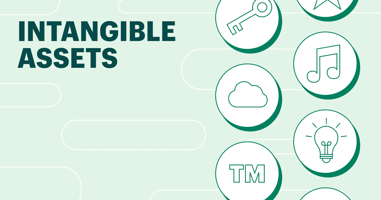Investing in an ecommerce brand offers a world of potential, but it's not uncommon for individuals...
How to Spot Undervalued E-Commerce Assets
It's no question that E-commerce has revolutionized the way we shop, which in turn has created a digital gold rush for investors. But, like any treasure hunt, the key to success lies in finding hidden gems. Spotting undervalued e-commerce assets can be a lucrative endeavor, turning a modest investment into a thriving business. So, how do you uncover these diamonds in the rough? Let's dive in and explore the strategies and insights that will give you an edge in this competitive market.
The Market Mystique: Understanding Market Trends
Investing in e-commerce isn't just about finding a product and selling it online. It's about understanding the ebb and flow of market trends. By staying ahead of the curve, you can identify undervalued assets before they become mainstream hits.
Follow the Money
According to Statista, global e-commerce sales are projected to reach $6.38 trillion by 2024. This astronomical growth is driven by evolving consumer behaviors and technological advancements. By analyzing these trends, you can pinpoint niches that are poised for explosive growth.
Niche Down
General stores might seem appealing, but niche markets often hold the real treasures. A study by Shopify revealed that niche e-commerce stores have higher conversion rates, with some niches boasting rates as high as 3.5%. Specializing allows you to cater to specific customer needs, creating a loyal customer base and reducing competition.
Financial Fortitude: Scrutinize Financial Health
Before you invest, a thorough financial audit is essential. You wouldn't buy a car without checking under the hood, so why treat an e-commerce asset any differently?
Revenue Streams and Profit Margins
Look for consistent revenue streams and healthy profit margins. According to a report by BigCommerce, the average e-commerce profit margin ranges from 20% to 30%. Focus on businesses that maintain or exceed this benchmark. Analyze their sales data, operational costs, and net profits to ensure financial stability.
Debt and Liabilities
An often-overlooked aspect is the business's debt. High levels of debt can be a red flag, indicating potential financial troubles. Ensure the debt-to-equity ratio is within a reasonable range, ideally below 1.0. This balance indicates that the company isn't over-leveraged and can sustain its operations.
The SEO Secret: Analyzing Search Engine Optimization
SEO is the lifeblood of online visibility. A well-optimized e-commerce site attracts organic traffic, reducing dependency on paid ads and increasing profit margins.
Organic Traffic
Use tools like Ahrefs or SEMrush to analyze the site's organic traffic. Sites with steady or increasing organic traffic are likely leveraging strong SEO strategies. According to HubSpot, 61% of marketers say improving SEO and growing their organic presence is their top inbound marketing priority.
Backlink Profile
A robust backlink profile is a good indicator of a site’s authority and trustworthiness. According to Moz, sites with a higher domain authority (DA) rank better on search engines. Look for e-commerce sites with a DA of 50 or higher to ensure strong search engine performance.
The Customer Connection: Evaluating Customer Base
The customer base is the heartbeat of any e-commerce business. A loyal and engaged customer base is a sign of a thriving business.
Customer Retention Rates
High customer retention rates are a strong indicator of customer satisfaction and business sustainability. According to Bain & Company, increasing customer retention rates by 5% increases profits by 25% to 95%. Analyze customer reviews, repeat purchase rates, and subscription models to gauge loyalty.
Email Lists and Social Media
A well-maintained email list is a goldmine. Email marketing has an average ROI of $42 for every $1 spent, according to DMA. Evaluate the size and engagement levels of the email list. Similarly, a strong social media following can drive traffic and sales, so look for active and engaged social media profiles.
The Competitive Edge: Assessing Market Position
Understanding the competitive landscape helps you identify if the e-commerce business has a sustainable competitive advantage.
Unique Selling Proposition (USP)
A strong USP sets a business apart from its competitors. Analyze the products, branding, and customer service to identify the business’s unique strengths. According to Nielsen, 59% of consumers prefer to buy new products from brands they are familiar with. Ensure the brand has a distinctive and appealing identity.
Competitor Analysis
Conduct a thorough competitor analysis. Tools like SimilarWeb and SpyFu can help you understand the competitive positioning and market share. Look for gaps in the market that the business can exploit to gain an edge over competitors.
Operational Excellence: Efficiency and Scalability
Operational efficiency and scalability are critical for sustained growth and profitability.
Supply Chain and Inventory Management
Evaluate the supply chain's reliability and the efficiency of inventory management. According to a study by TradeGecko, 43% of small businesses either don’t track inventory or use a manual process. Efficient systems can significantly reduce costs and increase profitability.
Fulfillment and Logistics
Smooth and efficient fulfillment processes enhance customer satisfaction and retention. According to MetaPack, 96% of customers say a positive delivery experience increases their loyalty to an e-commerce brand. Assess the fulfillment strategy, shipping options, and return policies to ensure they meet high standards.
Technological Tenacity: Leveraging Technology
Technology is the backbone of any e-commerce business. Leveraging the right tech can enhance customer experience, streamline operations, and drive growth.
Website Performance
Fast loading times and a seamless user experience are crucial. According to Google, 53% of mobile users abandon sites that take longer than three seconds to load. Ensure the site is optimized for speed and mobile responsiveness.
Tech Stack
A robust tech stack includes a reliable e-commerce platform, CRM, analytics tools, and marketing automation. Evaluate the current tech stack and its scalability. According to a survey by Statista, 54% of companies using advanced analytics achieve higher sales growth.
Brand Brilliance: Assessing Brand Value
A strong brand can significantly enhance the value of an e-commerce asset. It’s not just about the products but how the brand resonates with its audience.
Brand Reputation
Check online reviews, social media sentiment, and brand mentions to gauge reputation. According to BrightLocal, 87% of consumers read online reviews for local businesses, including e-commerce stores. A positive online reputation can drive customer trust and sales.
Intellectual Property
Evaluate the brand’s intellectual property, including trademarks, patents, and copyrights. According to a report by the USPTO, companies with intellectual property rights are more likely to achieve long-term success. Ensure the business has protected its unique products, branding, and content.
Conclusion: Striking Gold in the E-Commerce Market
Spotting undervalued e-commerce assets requires a keen eye, thorough analysis, and a strategic approach. By understanding market trends, scrutinizing financial health, leveraging SEO, evaluating the customer base, assessing market position, ensuring operational excellence, leveraging technology, and assessing brand value, you can uncover hidden gems poised for growth. Remember, the treasure hunt is not for the faint-hearted, but for those who dare to dig deeper, the rewards can be truly golden.


